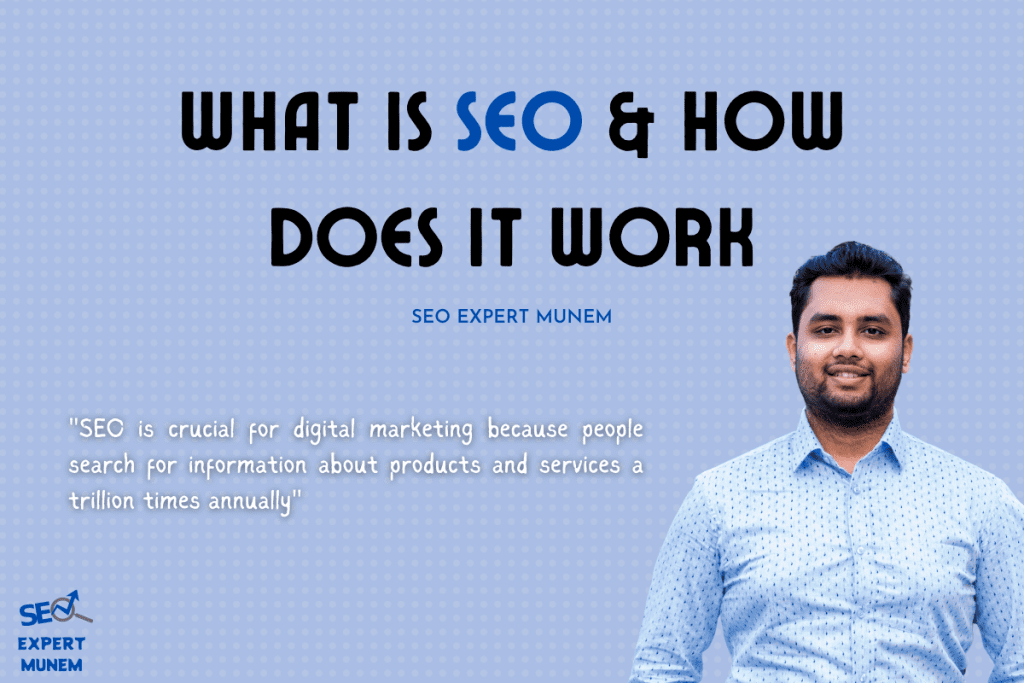SEO is crucial for digital marketing because people search for information about products and services a trillion times annually. Brands use search to bring more people to their websites. Visibility and a better search engine ranking can help boost sales.
Search results have changed over the past few years, giving users more direct responses and information that keeps them on the results page.
A comprehensive marketing ecosystem is supported by SEO. Knowing what your website visitors allow you to use that information in paid and organic campaigns, on the website, on social media, and more.
SEO requires hundreds of rules to satisfy user satisfaction and search engine ranking factors.
What is SEO stand for?


SEO stands for “search engine optimization.” It simply means making adjustments to your website that will make it more visible to users who are looking for products or services connected to your business on Google, Bing, and other search engines. The more noticeable your pages are in search results(SERP), the more likely it is that people will notice you and be happy to do business with you.
How Does SEO work for Websites?
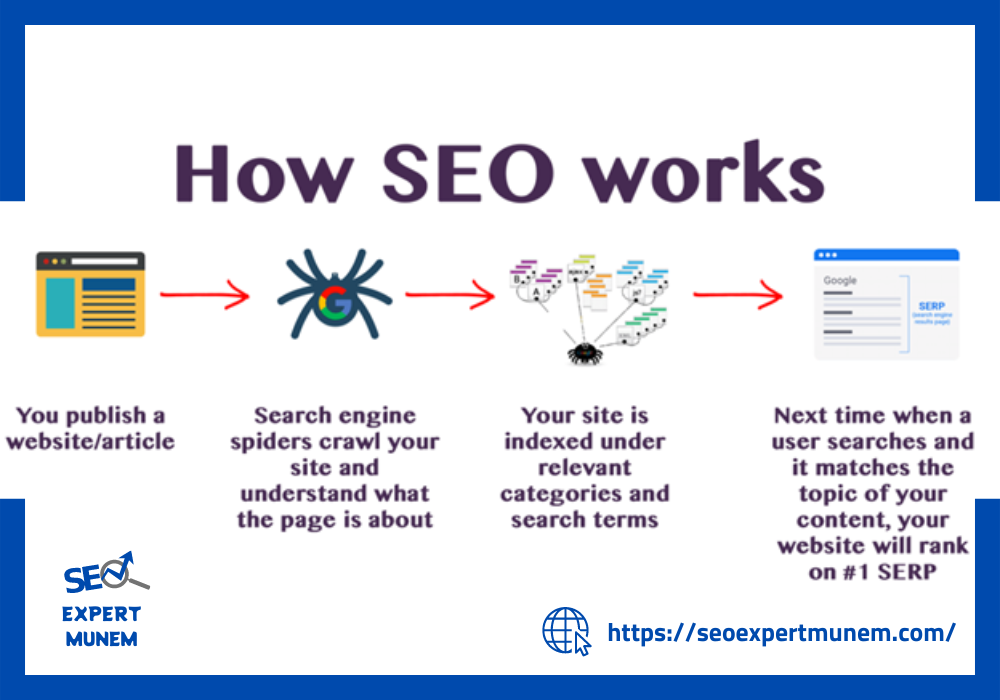

Websites are indexed and crawled by bots used by Google and Bing. The index functions as a sizable library where a librarian can locate the book ( website) you’re looking for.
Algorithms then determine the order of the search results for a query after analyzing index pages using hundreds of ranking factors or signals. The librarian in our hypothetical library has read every book and knows which will provide the information you seek.
SEO success factors represent user experience. Search engine bots use it to judge whether a website or page will satisfy a searcher.
Unlike paid search ads, organic search rankings must be improved by SEO professionals.
Our Periodic Table of SEO Factors divides factors into six main categories. It assigns weights based on the significance of each class for SEO. Site architecture and content optimization depend on many important factors, including content quality, keyword research, crawlability, and speed.
The most recent SEO Periodic Table includes a list of SEO Toxins. These shortcuts might have ensured a high ranking when search engines were simpler. They might work until your website is discovered.
Additionally, the new Niches section of our website looks at the success factors for local SEO, news/publishing, and e-commerce SEO. With the help of our SEO Periodic Table, you can learn about best practices. Understanding the specifics of SEO for each niche can help your small business, recipe blog, or online store(e-commerce website) rank well in search results.
Search algorithms deliver a practical search experience by surfacing relevant, reliable pages. Search rankings can be improved by optimizing your website and content for these factors.
It is easier to manage with different SEO types. Every type has SEO guidelines.
Six Types of SEO
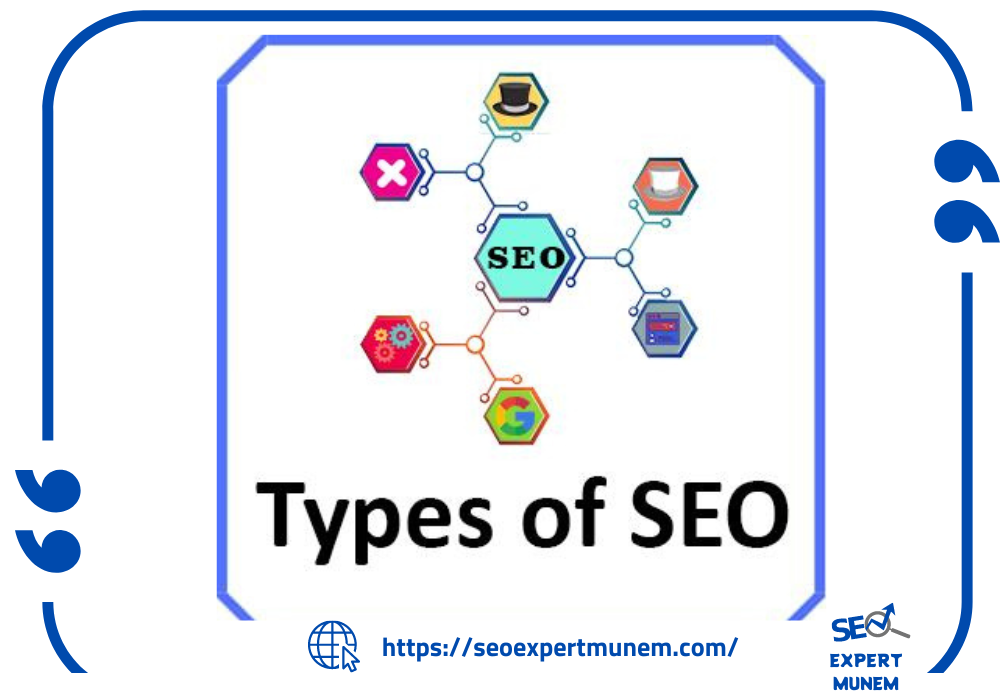

It is crucial to realize that these SEO subsets do not involve a unique process. It’s simply a way to divide a challenging process into a number of simpler, more manageable methods.
So, the various SEO types are:
- Technical SEO
- On-Page SEO
- Content SEO
- Off-Page SEO
- Local SEO
- eCommerce SEO
Technical SEO
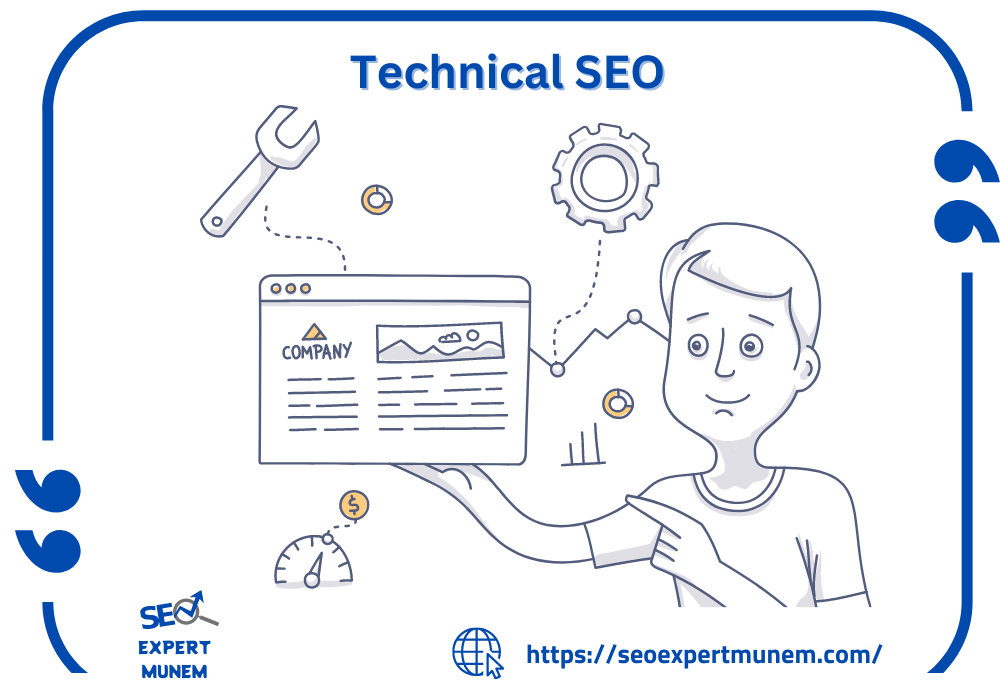

Technical SEO refers to search engine visibility-affecting technical parameters. Technical SEO helps search engine crawlers crawl and index a website.
Technical SEO guidelines:
- Check and optimize robots.txt to ensure search engines can access your website.
- Verify your website with Google Search Console and choose a domain.
- COVERAGE can find and fix crawl errors.
- Submit XML Sitemaps to significant search engines.
- Site and URL optimization.
- SEO-friendly web design
- Speed up your website on desktop and mobile.
On-Page SEO
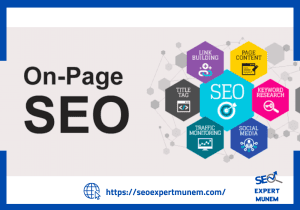

Any optimization you manage and implement on your website is called on-page SEO. By enhancing the usability and value of your website for users, you can raise your rankings or increase your visibility in search results on Google, Bing, and other search engines.
A few examples of on-page SEO action items are as follows:
- optimizing your meta descriptions and title tags
- Creating thorough, high-quality content
- enhancing the code on your website
- Streamlining the navigation on your website
- Speed optimization of your website
Content SEO


Content SEO is a part of on-page SEO. Improving content is the goal of content SEO.
This critical SEO success factor is included in many SEO types. Guidelines for on-page SEO content are frequently accurate.
Users and search engines favor content that they can understand.
Take these actions:
- Before writing, conduct keyword research. In content, use the SEO keywords for your website.
- Include long-tail and LSI keywords in your content’s headings, titles, and body.
- Publish comprehensive, lengthy content to satiate users and provide search engines with sufficient context.
- Link to other pages on your website and reliable external websites to assist users in learning more.
Off-Page SEO
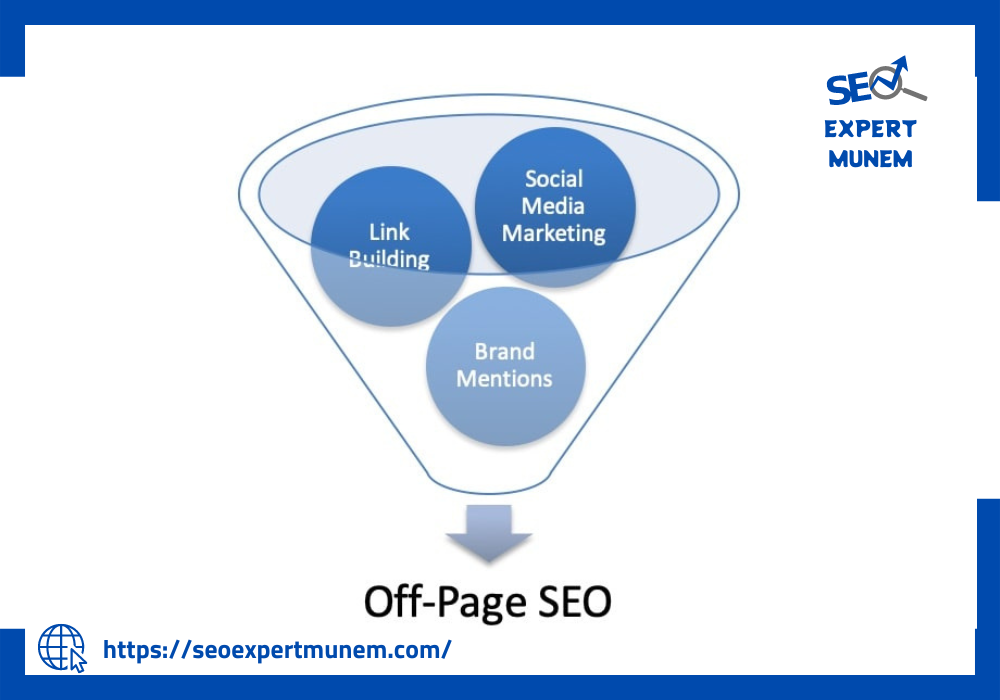

Off-page SEO, or off-site SEO, refers to optimization strategies that can raise your position in search engine results pages (SERPs). However, these strategies take place off your website. They involve obtaining links from other websites, social media shares, and online mentions.
Among the three categories of links are:
Organic Links
A natural link naturally leads to your website.
To obtain the link, your team does not take any initiative or engage in any outreach. Whether they follow your brand or find your content through a search, the author of that content decides to link to it.
Either way, they thought your content was worthwhile and deserved attention.
Created Links
Your website receives a built link from outreach.
Your team put in the effort to obtain this link, whether it was by contacting web admins, editors, or journalists. Even better, you might have used an advertising campaign to publicize the content, giving it the needed exposure for people to find it.
Despite building this link, you still produced helpful content for users.
Developed Links
A link to your website is created through self-submissions on directories, forums, or press releases.
Your team purposefully made this link without any outreach. Because search engines despise this type of link-building strategy, this off-page SEO tactic for link building frequently registers as a black-hat SEO practice.
Local SEO
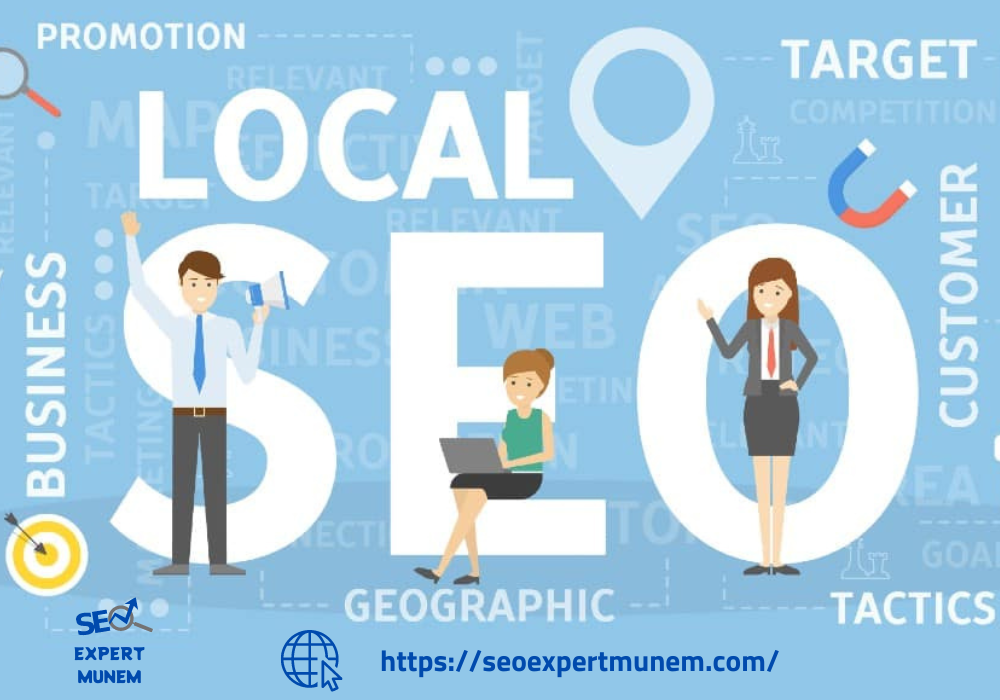

Only local businesses require local SEO. Therefore, you should local SEO-optimize your website if you want customers to visit your nearby store.
The following guidelines are also followed by local SEO:
- On every page of your website, include your company name, address, and contact details.
- Schema for local businesses on your homepage
- Account for Google My Business
- Register your company with reputable directories like Foursquare, Yelp, and Yahoo Small Business, among others.
- Website localization (for example, online local newspapers).
eCommerce SEO
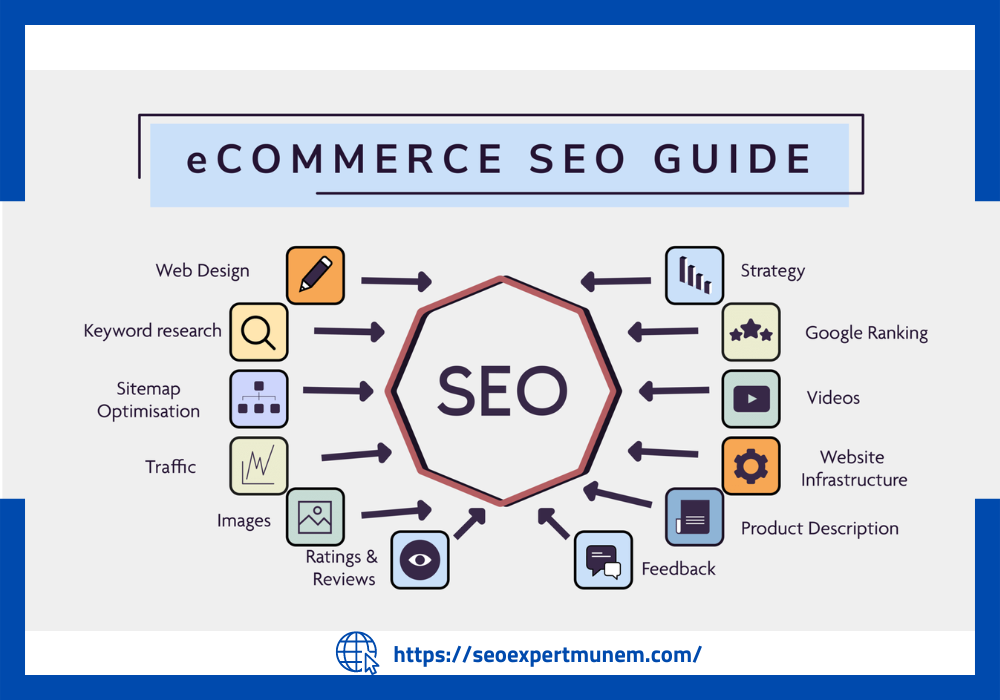

eCommerce is prevalent. SEO for businesses is more complex than SEO for blogs or websites.
eCommerce websites require more page optimization and are more difficult to market.
Key e-commerce SEO elements include:
- The homepage and category pages serve as the foundation for online store optimization. Optimize these two-page types before creating product pages.
- Utilize keyword research to improve product pages.
- Streamline all store graphics (images, videos)
- Insert schemas (product, offers, etc.)
- Use social media for advertising your store.
- Look for unique ways to point people to your product pages.
- Start a blog to discuss the issues that your products address.
FAQ
Is SEO beneficial for newcomers?
SEO is not simple. But it’s also not complicated at all. There are ideas you can start using right away, and others will require a lot more time and work. Therefore, you can perform SEO on your own.
What should the price be for a beginner SEO?
For US SEO agencies, the average hourly rate for SEO is $100–$250. For US agencies, SEO expenses frequently range from $2,500 to $10,000 per month. An SEO plan typically costs $2819 per month (per Ahrefs). International SEO firms may bill between $10 and $50 per hour.
How Do SEO Tools Work?
Tools for SEO offer information and warnings about your website’s general well-being and success. They assist in identifying areas for improvement and flaws or problems that might prevent you from ranking and gaining visibility in the SERPs.
Final words
SEO is essential if you want to expand your business. Although it might take some time, the results will be enormous. So begin your company’s SEO efforts right away. If you need SEO consultancy for your business. Connect with Me.

